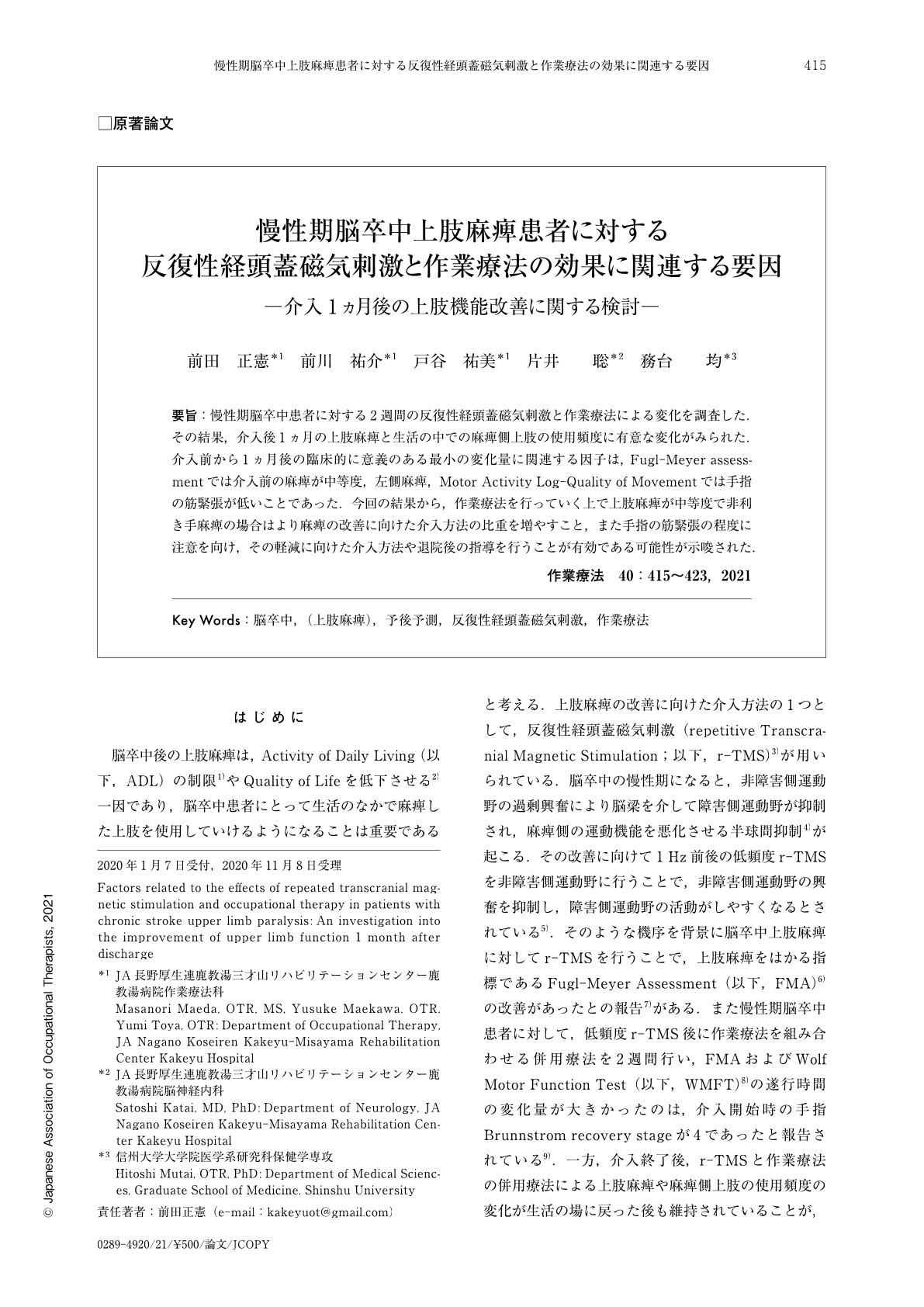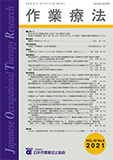Japanese
English
- 販売していません
- Abstract 文献概要
- 1ページ目 Look Inside
- 参考文献 Reference
要旨:慢性期脳卒中患者に対する2週間の反復性経頭蓋磁気刺激と作業療法による変化を調査した.その結果,介入後1ヵ月の上肢麻痺と生活の中での麻痺側上肢の使用頻度に有意な変化がみられた.介入前から1ヵ月後の臨床的に意義のある最小の変化量に関連する因子は,Fugl-Meyer assessmentでは介入前の麻痺が中等度,左側麻痺,Motor Activity Log-Quality of Movementでは手指の筋緊張が低いことであった.今回の結果から,作業療法を行っていく上で上肢麻痺が中等度で非利き手麻痺の場合はより麻痺の改善に向けた介入方法の比重を増やすこと,また手指の筋緊張の程度に注意を向け,その軽減に向けた介入方法や退院後の指導を行うことが有効である可能性が示唆された.
We carried out 2 weeks of repetitive transcranial magnetic stimulation and occupational therapy on chronic stroke patients with upper limb paralysis. The results showed a significant reduction in upper limb paralysis and an increase in frequency of use of the paralyzed side of the upper limb one month after the intervention. Factors associated with the Minimal Clinically Important Difference one month after the intervention were moderate pre-intervention paralysis and left-side paralysis in FMA, and low muscle tone in Motor Activity Log-Quality of movement. These results suggest that in the case of non-dominant moderate upper limb paralysis, it may be useful to increase the weight of interventions to reduce the paralysis, to pay attention to the degree of muscle tension in the fingers, and to provide interventions and guidance after the completion of interventions to reduce paralysis.

Copyright © 2021, Japanese Association of Occupational Therapists. All rights reserved.


